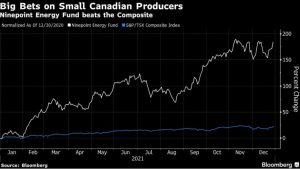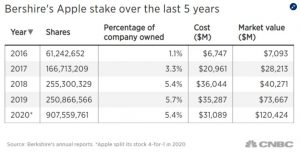Op/Ed
Each week Josef Schachter gives you his insights into global events, price forecasts and the fundamentals of the energy sector. Josef offers a twice monthly Black Gold newsletter covering the general energy market and 30 energy, energy service and pipeline & infrastructure companies with regular updates. We also hold quarterly webinars and provide Action BUY and SELL Alerts for paid subscribers. Learn more.
EIA Weekly Oil Data: The EIA data of Wednesday January 5th was seen by the market as positive for energy prices as US Commercial Crude Stocks fell 2.1Mb (better than the forecast of a decline of 3.2Mb). Refinery Utilization was at 89.8%, above the 80.7% level of a year ago but below the 93.0% of two years ago. Total Motor Gasoline Inventories rose a massive 10.1Mb on the week while Distillate volumes rose 4.4Mb as demand weakened after the Christmas holiday season. US Crude Production remained at the recent high of 11.8Mb/d. US Exports fell last week by 375Kb/d and for the week a total of 2.6Mb. This was the reason for the inventory miss versus forecasts. The key bearish feature of the week was that Total Demand fell by 2.55Mb/d to 19.67Mb/d (in the first week of 2020 demand was 19.92Mb/d) with Motor Gasoline demand falling 1.55Mb/d or to 8.17Mb/d (in early 2020 demand was 8.96Mb/d). Jet Fuel Consumption fell 122Kb/d to 1.47Mb/d compared to 1.97Mb/d in early January 2020 before the pandemic hit. Cushing Inventories rose 2.6Mb to 37.3Mb/d. Overall we would rate this week’s data as negative for energy prices.
EIA Weekly Natural Gas Data: Weekly withdrawals started six weeks ago as winter demand initiated the withdrawal season. Last week Thursday’s data showed a heavy cold weather withdrawal of 136 Bcf, lowering storage to 3.226 Tcf. The biggest US draws were in the Midwest (45 Bcf), the South Central (39 Bcf) and the East (32 Bcf). The five-year average for last week was a withdrawal of 121 Bcf and in 2021 was 114 Bcf. Storage is now 0.6% above the five-year average, so the US is not facing a natural gas shortage as is seen in Europe and Asia. NYMEX today is US$3.81/mcf, due to the frigid Arctic weather. AECO spot is trading at $3.94/mcf. This week’s natural gas data (out tomorrow) is likely to show a large draw of over 130 Bcf last week due to the cold weather and high heating needs. With the two key winter months for natural gas demand now here (January and February) we should expect large price moves to the upside on very cold days. Spikes over $6/mcf are likely to occur when weekly withdrawals of over 200 Bcf are seen. After winter is over natural gas prices should retreat and if the general stock market decline unfolds as we expect, a great buying window could develop at much lower levels for natural gas stocks in Q2/22.
The US is now the largest LNG exporter in the world (11.9Bcf/d) and has been sending a record number of LNG tankers to Europe to alleviate the tight supply situation there. Prices have risen again in recent days as Russia holds back volume increases (keeping to contracted volumes only) as it adds pressure on EU countries to deal with the Ukraine issue in their favour. Higher volumes can be sent to Europe quickly as the Nord Stream 2 pipeline is fully operational. It just needs the final German and EU bureaucratic approvals. Russia’s overall natural gas export volumes are up as it has regularly increased exports to China.
Baker Hughes Rig Data: The data for the week ending December 31st does not look to have been updated. We should have good data this Friday and next week’s report should be accurate.
Conclusion:
Bearish pressure on crude prices:
- The US Federal Reserve is ending its bond purchases in March 2022 which will remove 6%+ of monetary stimulus from the economy. Forecasters now expect three increases in rates in 2022 and three in 2023, so that the terminal Federal Funds rate will rise to 2.3% from 0.25% currently. It is likely that we will see a weaker US economy this year.
- Omicron Covid-19 caseloads are growing around the world with record infection rates. The US hit 1M new Covid cases per day. Hospital systems are near or at capacity and medical staff shortages are rising due to infections, burnout and quitting. Medical authorities are now focusing on ICU admissions for their measurement data of the severity of the pandemic. Deaths in the US have reached 828K and worldwide 5.45M. China has tightened travel restrictions that may last for at least six months and slow their economy down.
- Energy demand (as seen in this week’s EIA data) is under pressure as high prices for most food, rent, taxes, child care, health expenses, auto costs and other daily necessities make spending decisions tougher for consumers. Demand destruction is underway.
- China is buying more oil from sanctioned Iran which leaves less oil to be purchased from Saudi Arabia and other OPEC members. The main reason is price, which Iran is offering at >US$4/b less than the ICE Brent price. In addition (also helped by China buying their discounted oil) Venezuela is lifting its production with the help of Iran which is selling them diluent so that they can sell more exportable grades. According to Bloomberg, in December they reached 1Mb in one day and exported 619Kb/d in the month.
Bullish pressure on crude prices:
- OPEC met on January 4th and agreed to lift February production by their 400,000 b/d long-term plan. They see demand increasing and that the Covid pandemic will not decrease demand this year. They expect global demand to rise by 4.2Mb/d this year. OPEC+ hold their next meeting on February 2nd.
- While approving an increase of 400,000 b/d of new production for February 2022, OPEC has not achieved that increase in December. For the last five months they have missed their targeted 400Kb/d as many of their members do not have spare capacity due to underinvestment. The December data will be released by OPEC on January 18th. Since the restart of the 10Mb/d of cutbacks post the pandemic build in inventories, OPEC+ has reintroduced 7Mb/d, leaving 3Mb/d to add over the next seven months.
- The Iran deal is not seeing progress as the Iranians continue to want removal of sanctions to sell oil, but do not want to slow down their nuclear weapons program or allow intrusive UN inspections. The bulls are rejoicing that the 1-2Mb/d of new Iranian oil that could come on is now more unlikely.
- Libya has implemented a force majeure on exports as they face delayed elections (maybe one month) and violence. Recently oil exports fell by 200Kb/d as they had infrastructure difficulties. Many of their pipelines have had insufficient maintenance.
- Once the ground is frozen for tank battles, Russia is likely to invade Ukraine which will result in additional sanctions being added to pressure Russia to desist. Russia may face OECD blockages on sales of crude oil. Natural gas is a different story as Russia is the main provider.
CONCLUSION:
WTI rose over the last week due to strong winter demand for heating oil in Europe and Asia (cheaper than natural gas) which raised crude prices to US$77.84/b from US$75.61/b last week. The bulls are watching the high international natural gas prices versus crude and OPEC’s positive crude oil demand outlook. We remain focused on the health and strength of the US and China economies (the largest two in the world). We still see crude oil prices having US$20+/b of speculative value which should disappear as demand weakens once winter is over. Leveraged speculative longs in crude oil futures are vulnerable to nasty margin calls and this should add momentum to the recent downside pressure. As the worst winter weather subsides, the price of crude should retreat towards US$62-65/b. More downside is likely if the US and China economies stagnate and/or fall into recession.
Energy Stock Market: The S&P/TSX Energy Index currently trades at 173. Oil stocks are more vulnerable than natural gas stocks when winter ends and the crude bubble bursts. Energy companies with over-leveraged balance sheets should feel the most downside risk. The S&P Energy Bullish Percent Index today is at 95.24% or in SELL territory. Caveat Emptor!
Note: we are working towards returning to Mount Royal University (MRU) on October 22, 2022 for our ‘Catch the Energy’ Conference. We will be discussing the protocols on attendance, food service, masking and QR code verification with MRU in Q1/22 and will move forward with the event after having cancelled it for the last two years. We look forward to adding more companies and focus the event on attendees having safe and maximum, face to face time with management. More on this to come.
Our next quarterly webinar will be held on Thursday February 24th at 7PM MT.
If you would like to access our 2022 Forecast Report (which came out December 16th), all previous reports and the webinar archives, go to https://bit.ly/34iKcRt to subscribe.
Please feel free to forward our weekly ‘Eye on Energy’ to friends and colleagues. We always welcome new subscribers to our complimentary macro energy newsletter.

Facebook has restored access to an advertising account linked to the conservative children’s book publisher Heroes of Liberty — after the lockout sparked an outcry on social media.
Heroes of Liberty, which has published biographies of figures such as Supreme Court Justice Amy Coney Barrett and former President Ronald Reagan, said it was told the account was locked for violating Facebook’s policy on “Low Quality or Disruptive Content.”
The publisher appealed to Facebook to reconsider but was rebuffed.
Facebook’s parent company Meta said Tuesday that it has now reversed course on the ban, which was first reported by Fox Business...read more.

Looking at oil and gas stocks this year? Think small and Canadian, at least according to the world’s leading energy fund manager.
“Canada is, I think, the place to be in 2022,” said Eric Nuttall of Toronto’s Ninepoint Partners LP. His $950 million (US$752 million) Ninepoint Energy Fund was Morningstar’s top-performing energy-focused fund in 2021, posting a 189 per cent total return that blew away the S&P/TSX Composite Index’s 22 per cent. The second-best performer, Canoe Energy Portfolio Class, is another Canadian energy-focused fund and posted a total return of 101 per cent last year.
Nutall was helped by the overall surge in energy stocks, the best sector in the S&P 500 Index and S&P/TSX last year, and the more than 50 per cent rebound in oil prices as economies reopened and the pandemic receded. The performance comes after a string of difficult — he calls them “soul sucking” — years investing in the oil and gas business.
“I just thought I had to make it to the other side, then I’d be the last man standing,” he said.
Energy investors in 2021 benefitted from what Nuttall called a “disproportionate” increase in smaller-cap Canadian energy companies like Baytex Energy Corp. and Cardinal Energy Ltd., both of which rose over 420 per cent last year. But the fund’s most prescient trade was buying 53 million shares of beleaguered oil sands producer Athabasca Oil Corp. from Norway’s state oil company Equinor ASA in January 2021…read more.


Property assessments across the province continue to climb with new data revealing a nearly 22% increase since a year ago.
The vast majority of B.C.’s total real estate value of $2.44 trillion is housed in the Lower Mainland, according to information posted Tuesday to B.C. Assessment’s website.
The province’s most densely populated region accounts for $1.75 trillion of that value. More than $23.7 billion of the Lower Mainland’s updated assessments is from new construction, subdivisions and the rezoning of properties.
“The widely reported heighted demand among homebuyers during the COVID-19 pandemic is reflected in the upward movement of property values across the province including 10-30% increases throughout the Lower Mainland,” B.C. Assessment deputy assessor Bryan Murao said in a statement.
“City of Vancouver condos, however, are on the lower end of the changes, generally with single-digit increases, whereas homes in the Fraser Valley suburbs are changing higher compared to most of Metro Vancouver.”
Part of this trend could be tied to more of the labour force shifting to remote working, meaning fewer buyers are putting a premium on living closer to downtown Vancouver…read more.

- The 5% Apple stake Berkshire Hathaway acquired in 2018 for $36 billion is now worth $160 billion as the tech giant hit the $3 trillion milestone.
- Warren Buffett’s conglomerate has also enjoyed regular dividends from Apple, averaging about $775 million annually.
- Berkshire’s Apple stake now makes up more than 40% of its equity portfolio.
Warren Buffett’s out-of-character bet on Apple may end up being one of his winningest investments, making more than $120 billion on paper as the tech giant shattered yet another record to top a $3 trillion market valuation this week.
Berkshire Hathaway began buying Apple stock in 2016 and by mid-2018, the conglomerate accumulated 5% ownership of the iPhone maker, a stake that cost $36 billion. Flash forward to 2022 and the Apple investment is now worth $160 billion as the massive rally extended into the new year.
“Without a doubt, it is one of the strongest investments that Berkshire has made in the last decade,” said James Shanahan, Berkshire analyst at Edward Jones.
Other than Apple’s giant appreciation in share price, it has also been a lucrative bet for Berkshire because of its hefty payouts. Berkshire has enjoyed regular dividends, averaging about $775 million annually…read more.













